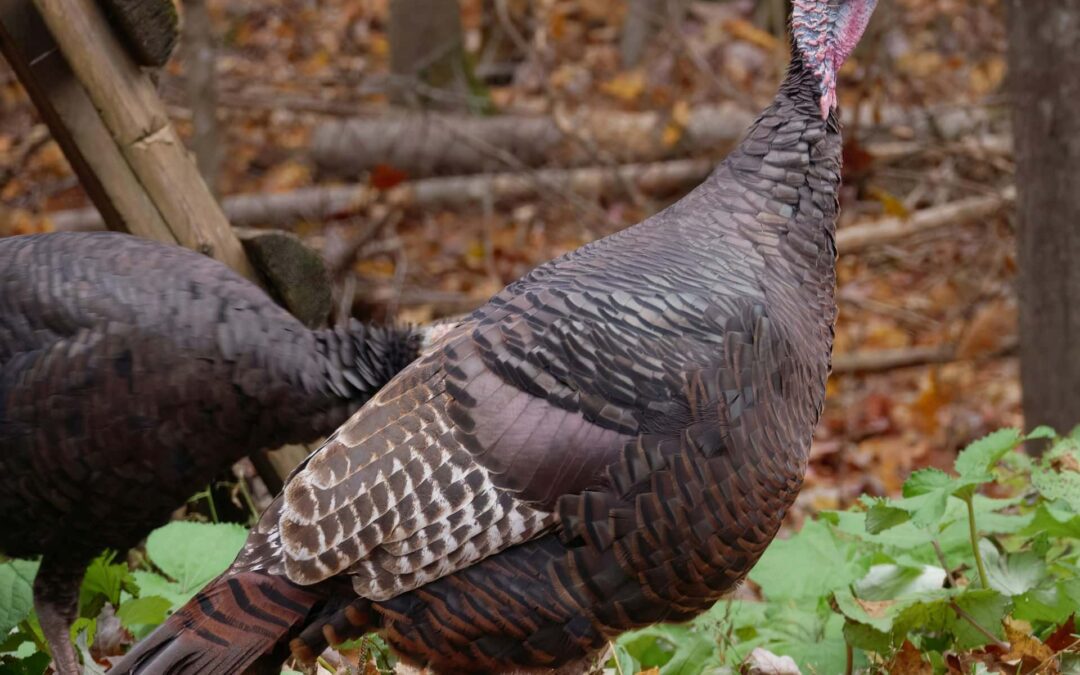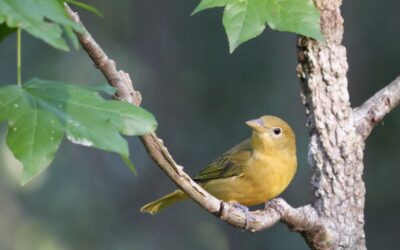
By Kalena Thomhave
It’s that time of year when you may spot the tiny and elusive hummingbird flitting about your yard. Read on to learn more about these birds that nest in our state and how you can help them keep coming back.
What hummingbirds can I expect to see in NH?
Though there are more than 300 species of hummingbirds around the world, you’re most likely to see the ruby-throated hummingbird in your backyard in New Hampshire. These species have distinctive red throats while females are more muted, with gray-tinged throats. Both have glistening, iridescent green backs.
Ruby-throated hummingbirds are the only species of hummingbird that breeds east of the Mississippi River, and these amazing, minuscule birds can flap their wings as fast as 80 times per second!
Ruby-throated hummingbirds nest, and are common, all across New Hampshire, where they assist the entire ecosystem by pollinating many flowering plants.
Though rare, the rufous hummingbird, a feisty, orange bird, has been in New Hampshire, and more rarely, Calliope hummingbirds have been spotted here.
Some species of hummingbirds, including the ruby-throated hummingbird, migrate more than 1,000 miles south each winter for a healthy supply of nectar and insects. On the journey, some will fly across the Gulf of Mexico without stopping.
How can I attract ruby-throated hummingbirds to my yard?
Rapid urbanization is restricting hummingbirds’ habitats and food sources. But you can help the tiny birds and attract them to your yard by making your space a bird-friendly habitat.
Get a hummingbird feeder
The first thing you’ll want to do is acquire the right bird feeder, which is different from the typical bird feeder you fill with seed, as hummingbirds drink nectar. Invest in a hummingbird feeder, which is designed to hold sugar water for hummingbirds to feed on.
The National Aviary recommends a sugar water recipe of four parts water to one part sugar. Be sure to change out the water regularly so it doesn’t go bad and cause you to unintentionally repel hummingbirds.
Your hummingbird feeder will likely be bright red because it’s generally believed that hummingbirds have a favorite color, so to speak. Their favorite flowers to feed from tend to be bright red or bright orange. But if your feeder is a different color, that’s actually fine too — as long as you provide good-quality nectar, hummingbirds will learn to frequent your feeder. Still, they do love bright colors!
Hang your feeder in a safe, albeit visible, spot
Hummingbirds like to feel safe as they’re eating (doesn’t everyone?). You don’t want to hang the feeder in the middle of an empty yard, but instead, you’ll want to hang it in a shaded area that’s close to something that could provide cover for hummingbirds, like a tree or some shrubs. If you live in an apartment and have limited yard space, you can just make sure that the feeder has cover overhead, shaded by an awning or gutters.
Be sure not to place feeders too close to windows. Each year, up to a billion birds are killed colliding into windows in the United States alone — and hummingbirds are some of the most vulnerable. One more thing on keeping hummingbirds safe: keep your cat inside!
Provide other nectar sources (as in flowers) to get even more hummingbirds to visit you
Hummingbirds will poke those long bills inside their favorite flowers, which tend to be brightly colored and trumpet-shaped. If you plant a pollinator garden, you’ll be providing another feeding option for your hummers. Hummingbirds will also eat the insects that live in and on your garden plants.
Flowers and other plants native to New Hampshire you may consider planting for hummingbirds include Eastern columbine, wild bergamot, blue cardinal flower, blazing star, and trumpet honeysuckle.
How else can I see and learn about hummingbirds this year?
Besides backyard birding, you can plan to take part in activities oriented toward celebrating the humble hummingbird. Is there a hike nearby that passes through a haven for hummingbirds?
You can also look at activities hosted by local libraries or garden shops.
Get ready to welcome ruby-throated hummingbirds with open arms (and a full feeder)!
This article first appeared on Good Info News Wire and is republished here under a Creative Commons license.

This is New Hampshire’s most popular cat name
This story appeared in the Granite Post's newsletter. Subscribe here. Ever met a cat named Lily? Turns out, it’s the most popular cat name in New...

The sweet reason why New Hampshire has a new state marsupial
Vivien Deal-Sosa worked alongside her Chesterfield School classmates to petition for the Virginia opossum to become NH’s state marsupial. Here’s how...

If your dog had a job, what would it be? Readers share their pup professions
Ever wonder what your dog would do if they had a 9-to-5? We recently asked readers to imagine their pup in the workforce—and their answers did not...

Your guide to wild turkey hunting season in New Hampshire
What you need to know about spring wild turkey hunting in New Hampshire, from rules and regulations to top locations. It’s spring in New Hampshire....

New Hampshire’s Annual Sheep and Wool Festival
Experience the New Hampshire Sheep & Wool Festival 2025! Workshops, 120+ vendors, live demonstrations, and fiber animals await May 10-11. Spring...

5 dog-friendly NH restaurants
Looking for a place to dine with your dog? New Hampshire offers charming dog-friendly restaurants with outdoor seating where staff love dogs—they...




